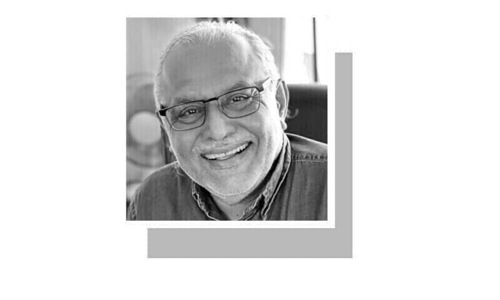
Eidul Azha brought a welcome sense of joy and relief amid otherwise stressful times. Though the economy is still off the growth track, signs of recovery are emerging after a prolonged period of uncertainty, also reflected in the bustling activity at cattle mundis and feed stalls that sprang up across the country.
It remains unclear how soon the government’s claimed economic gains will translate into tangible relief for investors and the general public. Still, there is a growing sense that Pakistan has pulled back from the brink of default and conflict, and the feeling of free fall has receded, for now.
After five difficult years, the cattle market is said to have rebounded to pre-Covid levels — and some believe it may have even surpassed them. In absence of systematic formal data on this largely cash-driven market, it is hard to determine the market’s exact size. However, market observers estimate it to have exceeded Rs200 billion this year.
Traditionally, livestock accounts for around 80 per cent of Eidul Azha-related spending, with the remaining 20pc going to retail items such as clothing, footwear and accessories. This year, however, retail activity is reported to have declined, accounting for no more than 15pc, while cattle-related spending surged to an estimated 85pc.
This Eidul Azha, retail activity reportedly declined, accounting for no more than 15pc, while cattle-related spending surged to an estimated 85pc
Sources in Islamabad, familiar with a government-sponsored study on the Eidul Azha economy, suggest that its scale is significantly larger than current estimates. These well-placed sources indicated that the study’s findings will be published soon.
“This is a politically motivated move. The government wants to inflate figures to support its narrative of economic revival,” said one analyst. “They have little regard for facts or any intention of meaningful intervention; otherwise, they would be making efforts to improve the quality and timeliness of data.”
Another observer offered a more measured view. “If the government is now inclined to track the annual surge in economic activity on this occasion, that’s a positive step. At the very least, issues of public interest are beginning to receive attention. Whether one agrees or disagrees is secondary; the primary gain is that the government is finally willing to look in this direction.”
The underperforming rural sector, long in need of investment, receives a significant cash injection during Eidul Azha through a direct transfer of wealth from the urban economy. This year, cattle farmers appear to be the primary beneficiaries, as livestock trade commands an even larger share of the overall Eid economy.
The assessments in this story are based on an informal cross-country survey, drawing input from meat merchants, traders, bankers and retailers to ensure a balanced perspective.
Muhammad Irshad Qureshi of ‘The Meat Shop’ in Karachi observed increased footfall in the cattle markets this year compared to last, but limited supply drove prices higher, prompting many would-be buyers to opt for collective sacrifices instead of individual ones.
“The impact of the halt in cross-border livestock supply from India and Afghanistan was clearly felt even in places as distant from borders as Karachi,” he noted. “Unlike previous years, buyers now often make several trips to bakra mundis before striking a deal.”
The State Bank of Pakistan (SBP) was unable to provide specific data on pre-Eid cash withdrawals or Eid-related remittance inflows, as such figures are compiled with a time lag. However, senior bankers confirmed a notable increase in cash withdrawal, largely driven by higher animal prices, also confirmed by some SBP officials. While exchange companies did not disclose the precise figures, they also said that pre-Eid inflows have been higher, lending stability in the currency market along with some other factors.
Malik Bostan, Chairman of the Exchange Companies Association of Pakistan, expressed hope that the surge in economic activity during Eid marks the beginning of Pakistan’s growth journey.
“It’s the result of a confluence of factors: the IMF [International Monetary Fund] tranche clearance, decline in inflation, the swift resolution of the armed conflict with India, improved credit ratings, and the release of pent-up demand that was suppressed during the period of uncertainty, all of which have contributed to the current Eid spending spree,” he explained.
The relatively limited supply of cattle in major cities played a key role in driving up prices. However, an early buying trend observed this year led to peak prices over the weekend before Eid, with rates fluctuating thereafter.
Many traders, eager to avoid the cost and hassle of transporting unsold animals back home, were willing to settle for whatever deals they could secure, preferring immediate sales over the uncertainty of holding livestock for another year without any guarantee of better returns.
The steady shift towards digitised sales and payment options, alongside other factors, has reshaped the composition of the livestock market, altering the relative roles and shares of key players such as breeders, cattle owners, contractors, retail investors, transporters, hide dealers, seasonal workers, and cattle feed suppliers.
Yousuf Jamshed, CEO of LXY Global, noted that the retail sector underperformed this year. “The peak buying season fell short of expectations with low footfall despite aggressive discount offers by many brands.
“These dashed hopes of businesses that had counted on Eid sales to recover from a sluggish last quarter and build momentum for the future,” he remarked.
Published in Dawn, The Business and Finance Weekly, June 10th, 2025













































